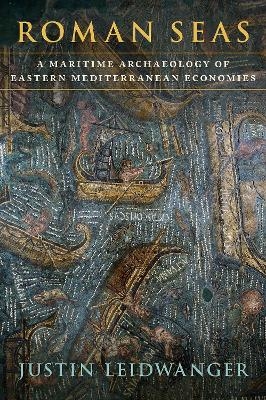
Roman Seas
Oxford University Press Inc (Verlag)
978-0-19-008365-6 (ISBN)
That seafaring was fundamental to Roman prosperity in the eastern Mediterranean is beyond doubt, but a tendency by scholars to focus on the grandest long-distance movements between major cities has obscured the finer and varied contours of maritime interaction. This book offers a nuanced archaeological analysis of maritime economy and connectivity in the Roman east. Drawing together maritime landscape studies and network analysis, Roman Seas takes a
bottom-up view of the diverse socioeconomic conditions and seafaring logistics that generated multiple structures and scales of interaction. The material record of shipwrecks and ports along a vital corridor from the southeast Aegean across the northeast Mediterranean provides a case study of regional exchange and
communication based on routine sails between simple coastal harbors. Rather than a single well-integrated and persistent Mediterranean network, multiple discrete and evolving regional and interregional systems emerge.
This analysis sheds light on the cadence of economic life along the coast, the development of market institutions, and the regional continuities that underpinned integration-despite imperial fragmentation-between the second century BCE and the seventh century CE. Roman Seas advances a new approach to the synthesis of shipwreck and other maritime archaeological and historical economic data, as well as a path through the stark dichotomies-either big commercial voyages or small-scale cabotage-that
inform most paradigms of Roman connectivity and trade. The result is a unique perspective on ancient Mediterranean trade, seafaring, cultural interaction, and coastal life.
Justin Leidwanger is Assistant Professor of Classics at Stanford University.
Preface
Acknowledgments
1. Maritime Interaction and Mediterranean Communities
* Movement, Connectivity, and Economic History
* Roman Maritime Economies
* Shipwreck Datasets
* An Eastern Mediterranean Case Study
* The Route Ahead
2. Topography and Tools of Interaction
* Marine Environment of the Eastern Mediterranean
* Evidence for Ships and Seafaring
* Roman and Late Antique Seagoing Vessels
* Ancient Mediterranean Sailing
* Diversity and Dynamism
3. Modeling Maritime Dynamics
* Regionalisms
* Landscapes
* Mobilities
* Thinking through Networks
* From Ancient Mobility to Dynamic Networks
* Maritime Archaeology and Network Potential
4. Exploring Shipwreck Data
* Number Crunching
* Connective Structures
* Spatial Topography of Seafaring
* Toward Big Data for Maritime Economies
5. Ports and Everyday Economies
* Situating Roman Ports
* Two Miniature "Archipelagos"
* Ports, Hinterlands, and Network Interaction
* "Nodes of Density"
6. Maritime Networks in the Roman East
* Small-Scale Activity and Regional Integration
* Emergence and Evolution of Maritime Networks
* From Maritime Archaeologies to Economic Histories
* Further Journeys
Appendices
1. Roman and Late Antique Shipwrecks from Southwest Turkey and the Northeast Mediterranean
2. Wind Patterns in the Southeast Aegean and Northeast Mediterranean
References
Index
| Erscheinungsdatum | 08.04.2020 |
|---|---|
| Verlagsort | New York |
| Sprache | englisch |
| Maße | 156 x 235 mm |
| Gewicht | 628 g |
| Themenwelt | Geisteswissenschaften ► Archäologie |
| Geschichte ► Allgemeine Geschichte ► Vor- und Frühgeschichte | |
| Geisteswissenschaften ► Geschichte ► Teilgebiete der Geschichte | |
| ISBN-10 | 0-19-008365-4 / 0190083654 |
| ISBN-13 | 978-0-19-008365-6 / 9780190083656 |
| Zustand | Neuware |
| Informationen gemäß Produktsicherheitsverordnung (GPSR) | |
| Haben Sie eine Frage zum Produkt? |
aus dem Bereich



